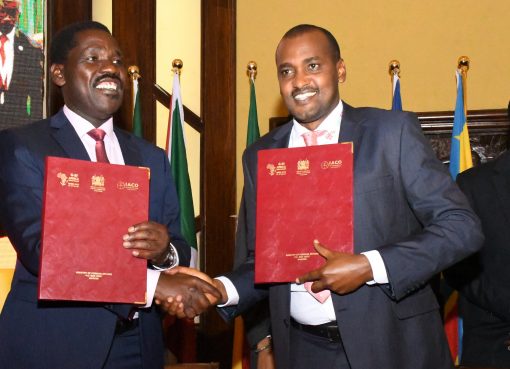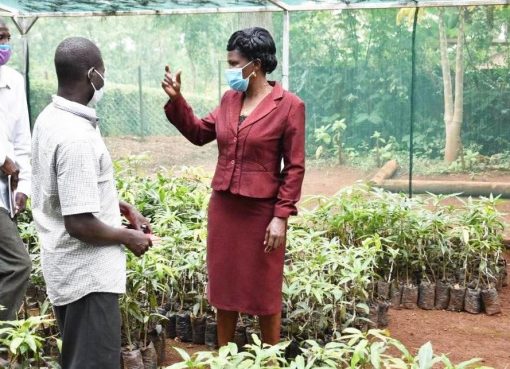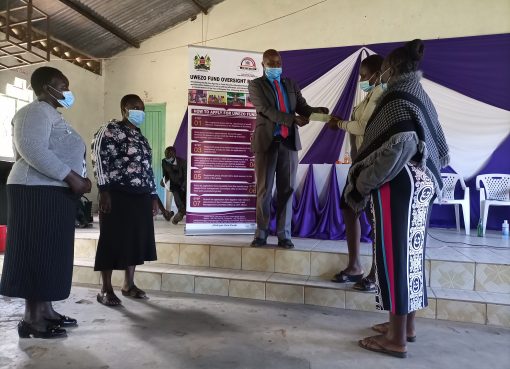The Water Services Regulatory Board (WASREB) has released four key guidelines meant to curb rogue water vending in the country.
The guidelines will also set water safety standards, bring rural water suppliers under regulation and enforce good corporate governance in the water sector.
Water vending is done by formal and informal entities in the country but informal vendors who tend to supply both treated and untreated water usually in small quantities using containers carried by hand, donkey or handcarts usually pose the challenge.
The quality of the water and quantity provided by some of the water vendors,the Water and Sanitation Cabinet Secretary (CS), Simon Chelugui said is not guaranteed, is poor and not regulated posing a health hazard to the public
Speaking on Tuesday during the launch of the four guidelines namely provision of water services in rural and underserved areas in Kenya, water safety planning, water vending and corporate governance, the CS said over 47 percent of Kenyans are not able to get water or are not covered.
The government, he added although has been helping citizens get water through vendors and services providers but added that there has been a challenge of regulating them.
“These guidelines will ensure all water utilities develop and implement Water Safety Plans (WSP) to ensure that the drinking water that gets to the consumers is not only of good quality but it is also safe for consumption.
He noted that WASREB will be able to regulate the vending service providers, license them and also determine who is allowed to deliver water to which point.
What this means, he said, is they will be able to know where the source of water is coming from, the cleanliness of their tankers , quality of water and handling of water from the source to tank and movement to consumer , something that he said has been missing.
Chelugui noted that they are also creating four dumping sites and working together with the Nairobi City Water to ensure that the service providers who are collecting sewer, exhausters and also using branded vehicles will be able to work and WASREB able to monitor who is handling their business illegally such as dumping in the rivers or its surface .
“We will be able to manage their licensing through withdrawal and also issuing and be able to control the safety and quality through inspecting physically the tankers being used,” he said.
Commenting on water projects that will help to achieve universal coverage for water and sanitation by 2030, in 29 towns across the country, the CS said so far they are at 15 percent because of some challenges and others are lagging behind because of National Land Commission office is yet to be in place.
He explained that with NLC now in office, they will be able to speed up progress and make use of a provision in the ministry of finance to waive taxes on projects hence speed up work, the target being to finish the projects by end of next year.
“We should be able to finish and commission the projects that cover the whole country since the 29 are spread across towns. Our intention is to see that all Counties headquarters are covered with water and sewer works,” the CS said.
The Ag. CEO Kenya Market Trust, Alison Otieno said Kenya requires Sh.100 billion annually, over the next eleven years, to achieve universal access to safe drinking water.
Nevertheless, she added that the exchequer and donors can only provide 60 percent of this funding and thus there is need to improve effectiveness and efficiency in resource utilization to achieve best value for invested resources.
Ms Otieno noted that the global and Kenyan discourse around development aid is rapidly shifting from aid to trade and partnership, and this session amplifies the need to rethink the existing model and adopt a paradigm shift in management of rural water services.
“Our neighbour Rwanda has done it. They are projecting to achieve SDG 6 target on water coverage in the next few years, with their water coverage currently standing at 95 percent,” she said.
The CEO added that the guidelines clearly indicate the government’s resolve to improve living standards of rural population, by ensuring sustainable provision of safe and clean water.
“I am unequivocally certain that this guideline will reorganize the rural water sub-sector that makes up approximately 73 percent of our population and that regularizing and regulating rural water services through the guideline will be an opportunity for the country to increase access to water, improve financial and commercial viability of rural water utilities, and contribute to sustainability of water services,” Otieno said.
WASREB CEO Eng. Robert Gakubia called for close collaboration between the National Government and the County Governments and singled out obligations by County Governments with respect to provision of water services in rural areas considered not to be commercially viable.
“Water service provision is a shared function between the National and County Government as set out specifically in the Fourth Schedule of the Constitution which provides for functions of the County Governments to include among others county public works including water and sanitation services,” Eng. Gakubia said.
According to the 2017-18 WASREB Impact Report, it is estimated that 43 percent of the population in Kenya still has no access to piped water within easy reach and with a piped water supply coverage falling short of the targeted 100 percent in most utility areas, the role of vended water in meeting the deficit cannot be underrated.
By Wangari Ndirangu




